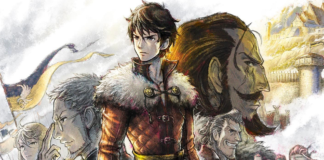To say that Sonic has had a rocky history would be an understatement. From his meteoric rise in the 1990s to the 3D transition and Sega’s collapse in the console market, the blue blur has faced some of the most difficult challenges any IP ever has. There’s been some high highs and even lower lows, leaving behind a legacy that’s intensely interesting to look back on. Perhaps that’s why Sonic Generations, in both concept and execution, has always worked so well.
Marketed as a victory lap for the mascot’s 20th anniversary back in 2011, Sonic Generations proved to not only be a spectacular showcase of the series’ greatest hits, but some of the best platforming the industry has seen yet. Of course, it was then followed up by such dumpster fires as Sonic Boom: Rise of Lyric and Sonic Forces, but that doesn’t take away from the greatness Generations was able to achieve.
Even a decade after its original release, Sonic Generations is still the best original title the series has produced. It may have its fair share of niggling problems (and a helping of Sonic’s famous jank), but it more than makes up for it with a slick and smooth gameplay experience that reflects well on everything that’s come before. The fanbase has long held this game as the standard to beat, and after playing through the recent 2024 remaster, I can certainly understand why.
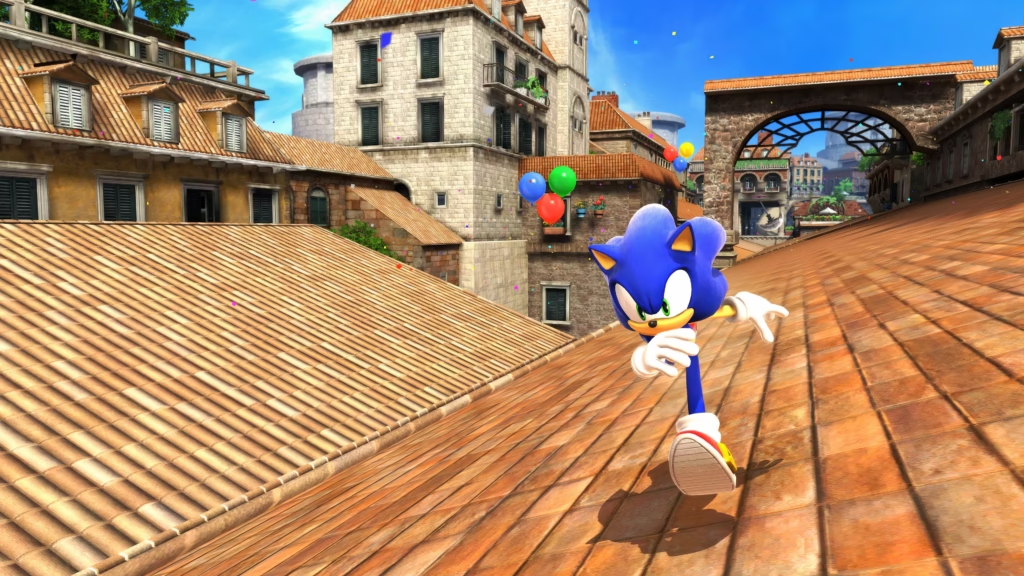
Although it’s been around for ages, I never played the original Sonic Generations. All I knew was the basic premise: Sonic is celebrating his birthday with all of his friends when a monster known as the “Time Eater” captures them in a strange white void. Locations from their past are all around them, distorted by the creature’s draining powers, and it’s up to Sonic to relive his old adventures and put the timeline back together.
It’s a simple story that gets the job done, but feels oddly strained in a series that usually strives for more. All of Sonic’s allies are here, but their presence is reduced to just a few lines of dialog a piece. Only Sonic, Tails, and Dr. Eggman have any real relevance, each accompanied by their own past selves. It’s a brilliant idea for an anniversary title, but doesn’t do nearly as much with the concept as it could story-wise.
Thankfully, the gameplay makes up for that ten times over. With access to both the classic and modern iterations of Sonic, levels can be explored in ways they never have before. What would 16-bit stages look like with a modern, 3D approach? What would Sonic Colors feel like with classic Sonic’s more limited controls? It’s all explored in-depth here, and the results were constant in their fun and engaging surprises.
The selection of stages is also solid, with nearly all of the series most iconic locales. From early greats like Green Hill and Sky Sanctuary to more recent gems like Rooftop Run and Planet Wisp, there’s no shortage of nostalgia to be found. It’s especially interesting to see games like Sonic the Hedgehog 2006 being represented, showing us that even the series’ low points had potential hidden within them.
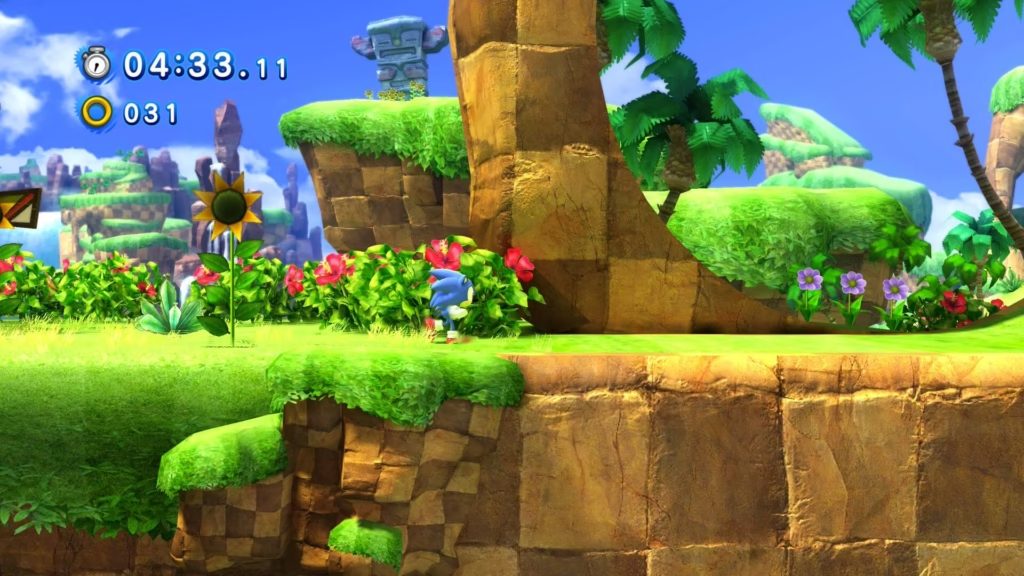
It is worth noting that because the stages were chosen for nostalgia over variety, many of them lack a distinct visual identity. Only a few levels stray from either natural forests and fields or bustling cityscapes. However, because they’re so well entrenched into the unique aesthetic of their source games, this is only a minor complaint.
The stellar selection of musical remixes does a ton to help. Unique tracks are given to every act in the game, providing plenty of love to the iconic originals and further separating the feel of classic and modern Sonic. While classic will often have springy and upbeat, yet simple tunes that mimic the good old days, modern uses rock and techno-inspired arrangements with a much faster tempo. Both are great in their own ways, and show a solid understanding of each era’s appeal.
In terms of controls, the two Sonics do a good job balancing each other out. Modern Sonic is similar to other appearances of the era: a ton of fun to run around with at blistering speeds, but a bit unwieldy to control in tight platforming sections. Classic Sonic is basically the opposite, being more precise but lacking the abilities needed to maneuver around stages easily. Some might see these as flaws in design, but they also do a great job distinguishing the two playstyles.
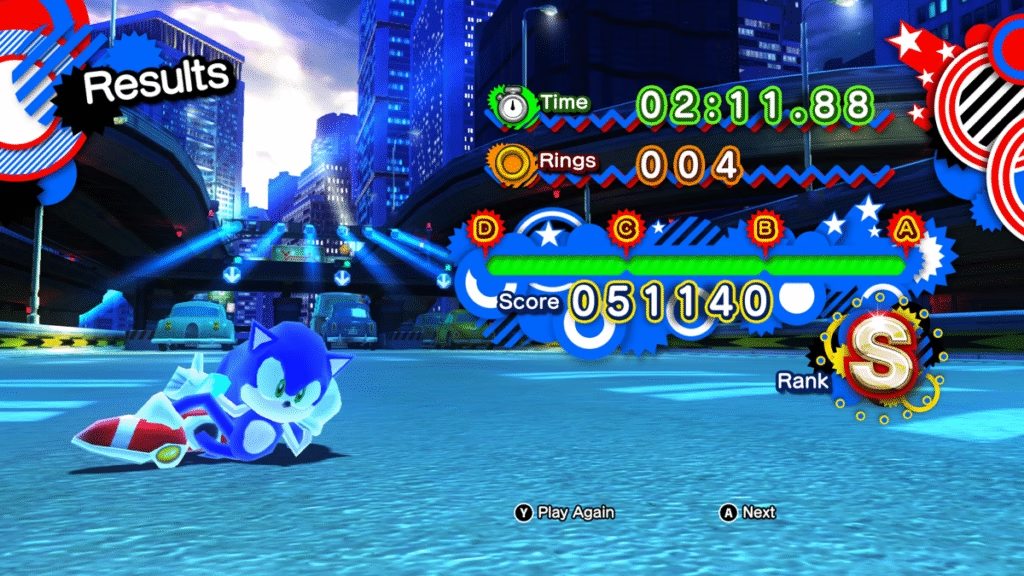
The design of the levels themselves is impressively dense and freeform, allowing for experimentation in a way few other Sonic games do. It almost feels like a puzzle, trying to find new hidden paths and optimize your route through the space. In the past, I’ve had trouble understanding the “replayability” of Sonic games, since it felt like even if you took a different path, the results were usually similar in appearance and design. Here, however, I’d go so far as to say that if you only go through each level once, you’re doing yourself a disservice.
There’s two or even three levels worth of unique content in each of these stages (especially for modern Sonic), and I was elated to discover something new each time I went through them. This is undoubtedly the greatest strength that the game has; it expertly balances the density of its content with the length of the game to create something that feels both satisfyingly long and quality rich.
However, that’s not to say that every piece of content is perfect. While the nine core levels are all very fun (with one minor exception), everything that surrounds them feels noticeably less polished. The shorter “challenge” stages that accompany each area are a mixed bag, with variations like adding additional enemies or one-off gameplay twists. While a fine enough idea, these are mostly less fun than the originals aside from races or speed trials. Thankfully, they are also mostly optional, but it is still worth noting.
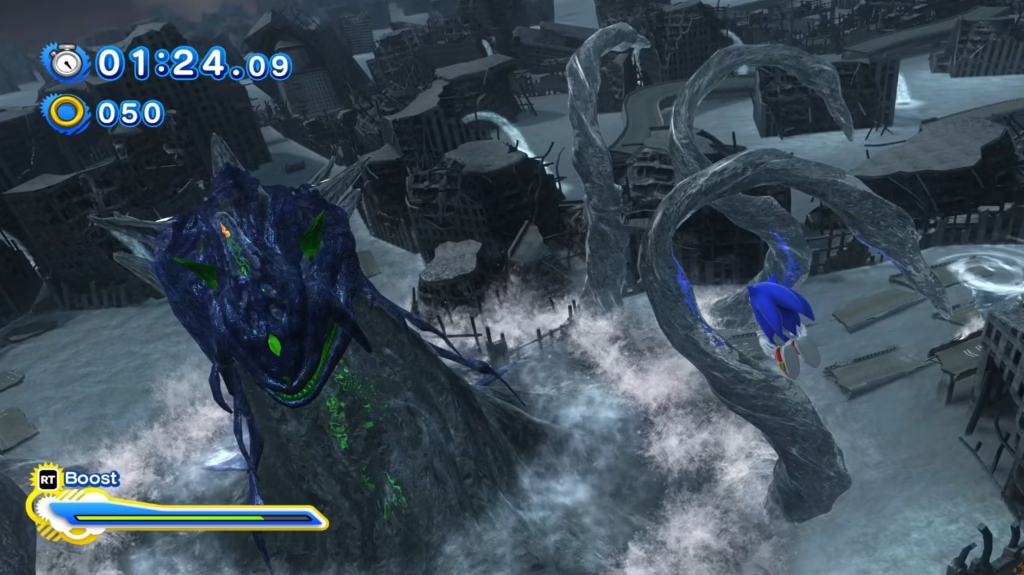
Another area for improvement lies in the boss fights. There are seven in total, split between four “villain” and three “rival” battles, and all present a fun but noticeably janky challenge. The ideas behind most of these fights are great, bringing back some of Sonic’s greatest foes for a rematch, but the execution often gets in the way with bugs or obtuse design. The final boss is the most egregious example, wasting the player’s time with extremely long attack cycles and tiny margins for error. It feels like they wanted to create something open-ended like the main stages, but it often isn’t clear what you’re supposed to do to progress or whether what you do is one of the intended answers.
Thankfully, the remaster’s improved performance does much to remedy this. On PlayStation 5, gameplay ran at a smooth 4K 60fps, allowing the controls to feel more responsive and the level graphics to be even more eye-catching. The in-engine cutscenes do have more noticeable issues (Sonic and Tails look a little too plasticky), but with how few of them there are, this isn’t a significant hinderance.
There were many other changes made in the remaster, including the addition of the all-new Shadow Generations campaign, but because that content is basically a new game, we opted to leave it to its own separate review. The alterations to the original are mostly cosmetic, allowing this review to be as applicable to the original as it is to the 2024 version.
Verdict
While there may be a few areas that aren’t quite perfect, don’t confuse the message here; Sonic Generations was and is still one of the best Sonic games out there. The graphics are stylish and performance smooth, the levels are thrilling and endlessly enjoyable, and the concept is nostalgic in just the right way. However, it’s clear that even without that nostalgia, this would still be the peak of Sonic’s gameplay in 3D. Even when it struggles in terms of its side content, the core of the experience here is still top-notch.
More than anything, it really is an accomplishment to see Sonic thriving 20 (or now 35) years after his creation. Truly, he is the eternal underdog of the video game industry, and Generations shows this better than rose-tinted glasses ever could. I may not always like the direction Sega goes when it comes to this franchise, but Sonic will forever be a gaming icon, and Sonic Generations is the perfect encapsulation of his flawed, but remarkable history.

